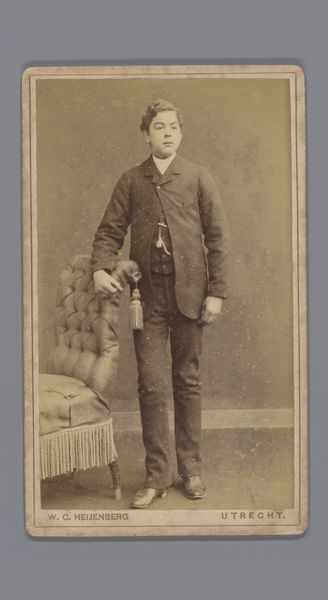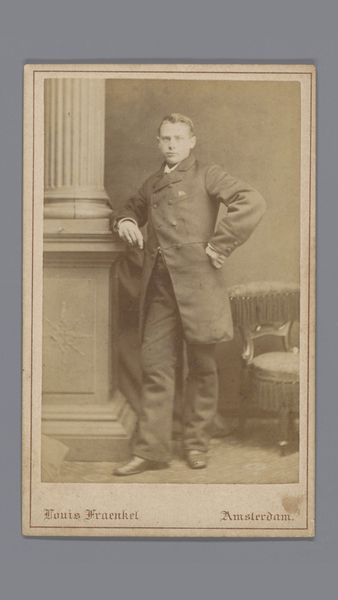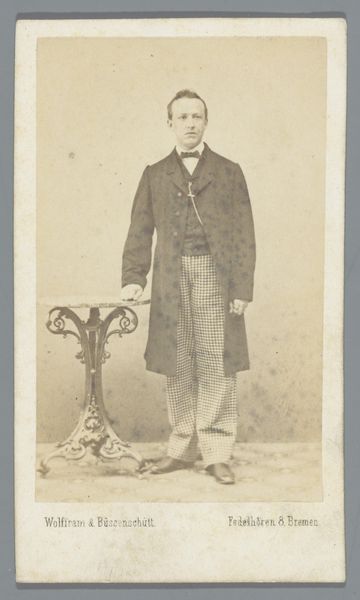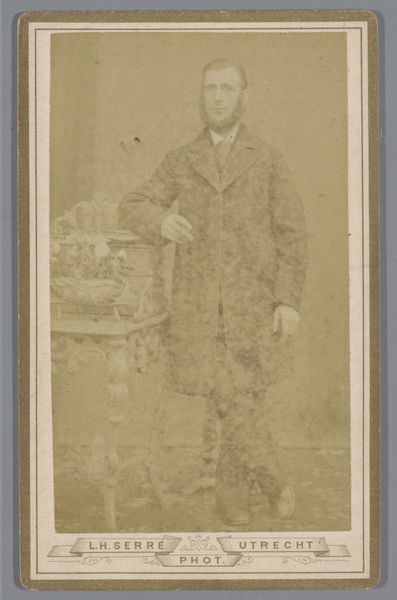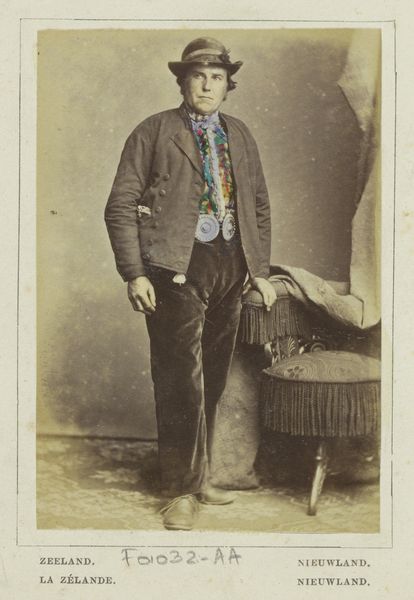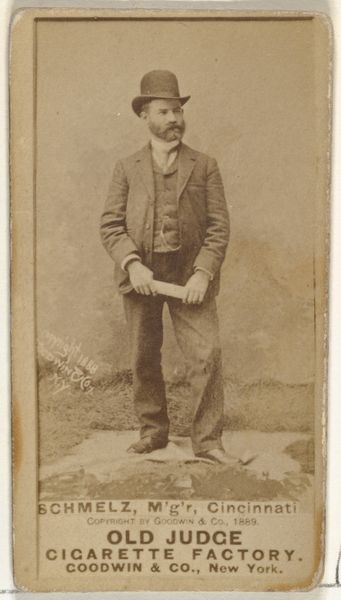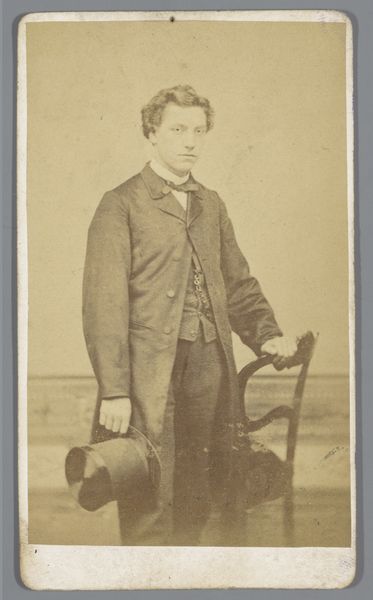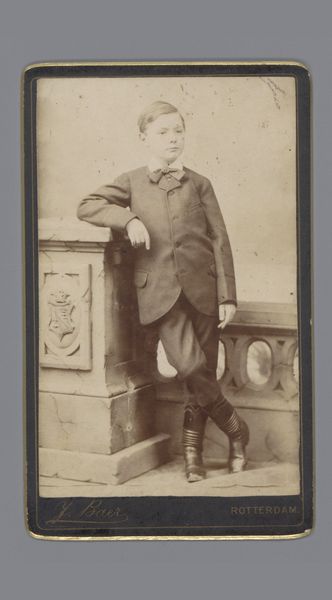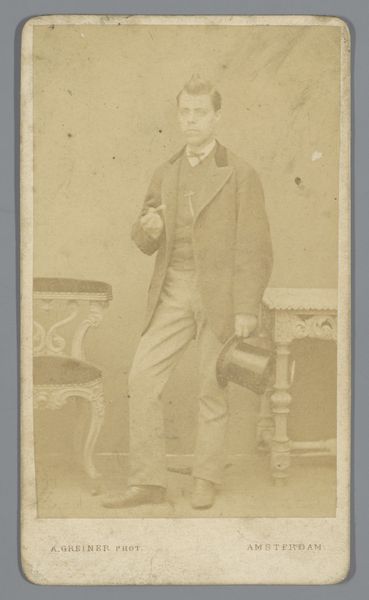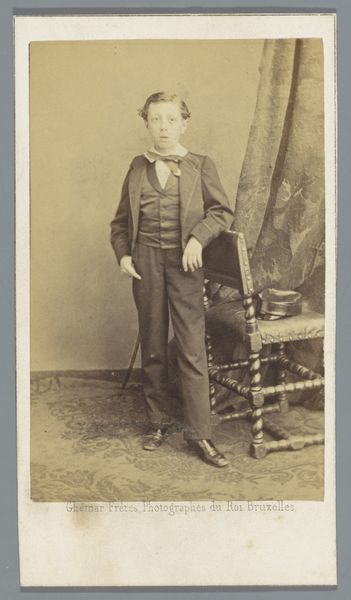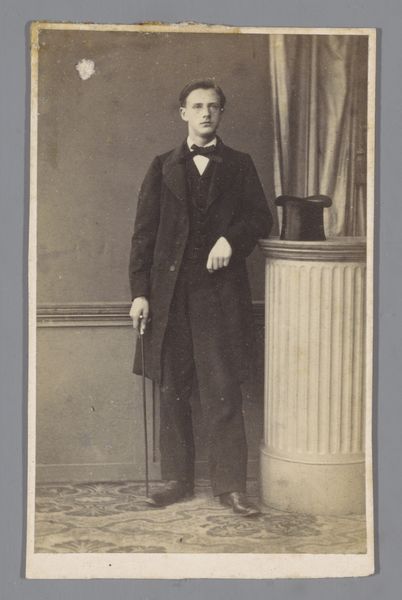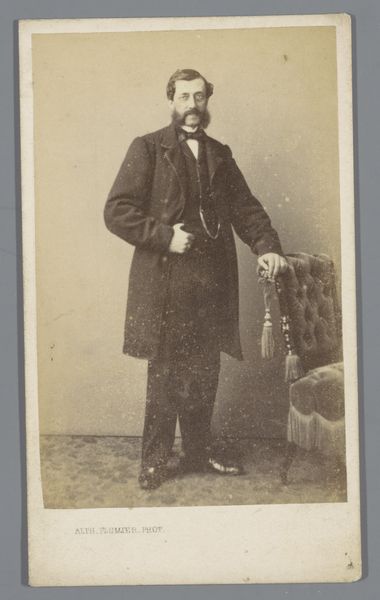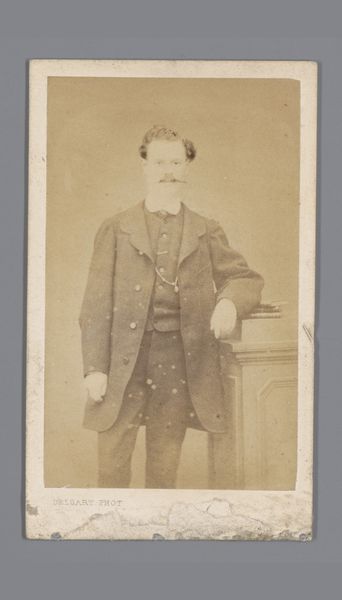
photography, gelatin-silver-print
#
portrait
#
photography
#
gelatin-silver-print
#
realism
Dimensions: height 104 mm, width 63 mm
Copyright: Rijks Museum: Open Domain
Curator: Let's examine this photograph titled, "Portret van een onbekende jongen naast een stoel," created between 1877 and 1897 by Lodewijk Hendrikus Serré. It's a gelatin silver print showcasing the portrait style and leans towards realism. Editor: The first thing that strikes me is the austerity of the image, and also a vulnerability. There is the contrast of the rough-spun suit of the subject with the elegant chair and trim. Curator: The young boy's attire—the suit—suggests a specific class position, doesn’t it? Considering the late 19th century, there is almost a performative element to this presentation. How do you see the construction of identity playing out here? This era coincides with increased visibility of male youth within a changing social and economic framework. Editor: For me, the question becomes one of production. The gelatine-silver print suggests standardized manufacturing. This, as well as his relatively commonplace suit, all point to an emergent material reality for the upwardly mobile at the time. Curator: That chair too. It serves as a prop in constructing an image of cultivated domesticity. What does the relationship between labor, production, and social ascension tell us here? Editor: I think this portrait suggests access and aspiration. Here’s an item of furniture reproduced by machines being utilized for the social mobility and posturing of a person also possibly in search of stability and access in the changing economic landscapes of the era. Curator: This makes me think about how portraiture serves as a critical site for studying not only the rise of capitalism but also, increasingly diversified audiences and shifting societal expectations for youth. How were they expected to perform? How does this reflect contemporary anxieties and desires surrounding adolescence? Editor: Well, the image, crafted using a specific, commercially accessible process speaks to an industrialised, reproducible world. As opposed to the pre-industrial days. This medium suggests photography itself was becoming a consumer product. The rise of its accessibility surely marks its shift in society. Curator: Examining images like Serré's photograph can lead to thinking about shifting values surrounding family, class, and burgeoning consumer culture that transformed self-perception and presentation. Editor: Absolutely. It leaves me contemplating photography's evolution alongside wider societal shifts.
Comments
No comments
Be the first to comment and join the conversation on the ultimate creative platform.
